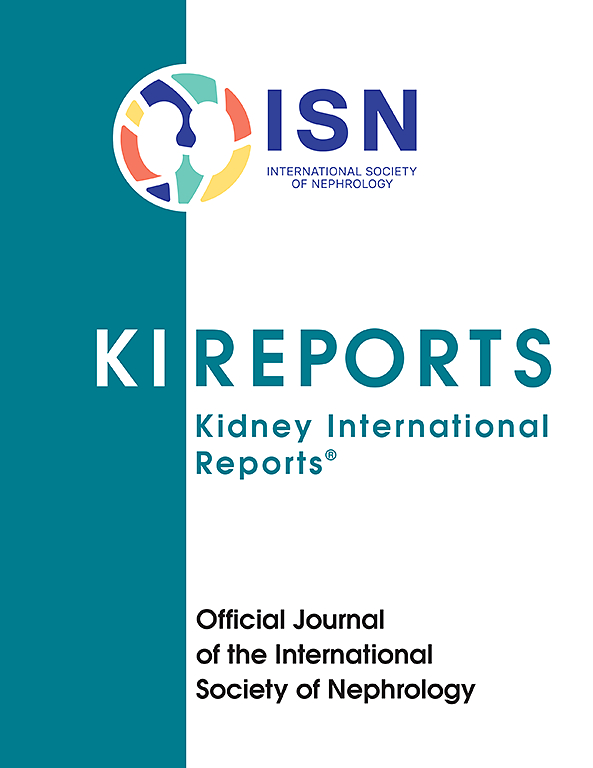Steroid Avoidance With Low-Dose Tacrolimus is Safe and Effective in the Long-Term for Kidney Transplant Recipients
IF 5.7
2区 医学
Q1 UROLOGY & NEPHROLOGY
引用次数: 0
Abstract
Introduction
In our previous multicenter, open-label, randomized controlled trial (RCT), the SAILOR study, we reported good feasibility, safety, and efficacy of steroid avoidance (SA) at 2 years in immunologically low-risk kidney transplant recipients. A total of 222 participants were randomized to either antithymocyte globulin (ATG) induction + low-dose tacrolimus + mycophenolate mofetil (MMF) or basiliximab induction + low-dose tacrolimus + MMF + prednisolone. Long-term results are needed to confirm the extended safety and efficacy of the SA protocol beyond the short- to medium-term follow-up seen in current reports using low-dose tacrolimus.
Methods
In the SAILOR follow-up observational study, we collected clinical data of 215 participants of the original SAILOR trial at 1, 2, 5 years, and at the last follow-up.
Results
The mean follow-up time postrandomization was 7.3 years. Death-censored graft survival (91.8 vs. 93.1%, P = 0.88), patient survival (88 vs. 93%, P = 0.32), cumulative incidence of biopsy-proven rejection (19.8% vs. 16.3%, P = 0.6), and kidney function (estimated glomerular filtration rate [eGFR]: 50.8 vs. 54 ml/min per 1.73 m2, P = 0.27) were similar in the 2 arms. Cumulative incidence of posttransplantation diabetes mellitus in per-protocol population was significantly lower in the steroid-avoidance arm. Serious infections requiring hospitalization, and malignancies did not differ significantly. Two-thirds of participants in the SA arm remained on the steroid-free protocol at the end of follow-up.
Conclusion
SA proved to be safe and effective in patients with low immunological risk for up to 7 years following kidney transplantation. Our findings provide robust evidence supporting SA strategy with low-dose tacrolimus without compromising outcomes even at the extended 7-years follow up.
低剂量他克莫司避免类固醇对肾移植受者长期安全有效
在我们之前的多中心、开放标签、随机对照试验(水手研究)中,我们报道了免疫低风险肾移植受者在2年内使用类固醇避免(SA)的可行性、安全性和有效性。共有222名参与者被随机分配到抗胸腺细胞球蛋白(ATG)诱导+低剂量他克莫司+霉酚酸酯(MMF)或basiliximab诱导+低剂量他克莫司+ MMF +强的松龙。在目前使用低剂量他克莫司的报告中所见的中短期随访之外,还需要长期的结果来证实SA方案的安全性和有效性。方法在SAILOR随访观察性研究中,我们收集了215名原始SAILOR试验参与者在1、2、5年和最后一次随访时的临床数据。结果随机化后的平均随访时间为7.3年。两组的死亡剔除移植存活率(91.8比93.1%,P = 0.88)、患者生存率(88比93%,P = 0.32)、活检证实的排斥反应累积发生率(19.8%比16.3%,P = 0.6)和肾功能(估计肾小球滤过率[eGFR]: 50.8比54 ml/min / 1.73 m2, P = 0.27)相似。在类固醇避免治疗组中,移植后糖尿病的累积发病率显著降低。需要住院治疗的严重感染和恶性肿瘤没有显著差异。在随访结束时,三分之二的SA组参与者仍在使用无类固醇方案。结论sa对肾移植后7年免疫风险低的患者是安全有效的。我们的研究结果提供了强有力的证据,支持低剂量他克莫司的SA策略,即使在延长的7年随访中也不会影响结果。
本文章由计算机程序翻译,如有差异,请以英文原文为准。
求助全文
约1分钟内获得全文
求助全文
来源期刊

Kidney International Reports
Medicine-Nephrology
CiteScore
7.70
自引率
3.30%
发文量
1578
审稿时长
8 weeks
期刊介绍:
Kidney International Reports, an official journal of the International Society of Nephrology, is a peer-reviewed, open access journal devoted to the publication of leading research and developments related to kidney disease. With the primary aim of contributing to improved care of patients with kidney disease, the journal will publish original clinical and select translational articles and educational content related to the pathogenesis, evaluation and management of acute and chronic kidney disease, end stage renal disease (including transplantation), acid-base, fluid and electrolyte disturbances and hypertension. Of particular interest are submissions related to clinical trials, epidemiology, systematic reviews (including meta-analyses) and outcomes research. The journal will also provide a platform for wider dissemination of national and regional guidelines as well as consensus meeting reports.
 求助内容:
求助内容: 应助结果提醒方式:
应助结果提醒方式:


